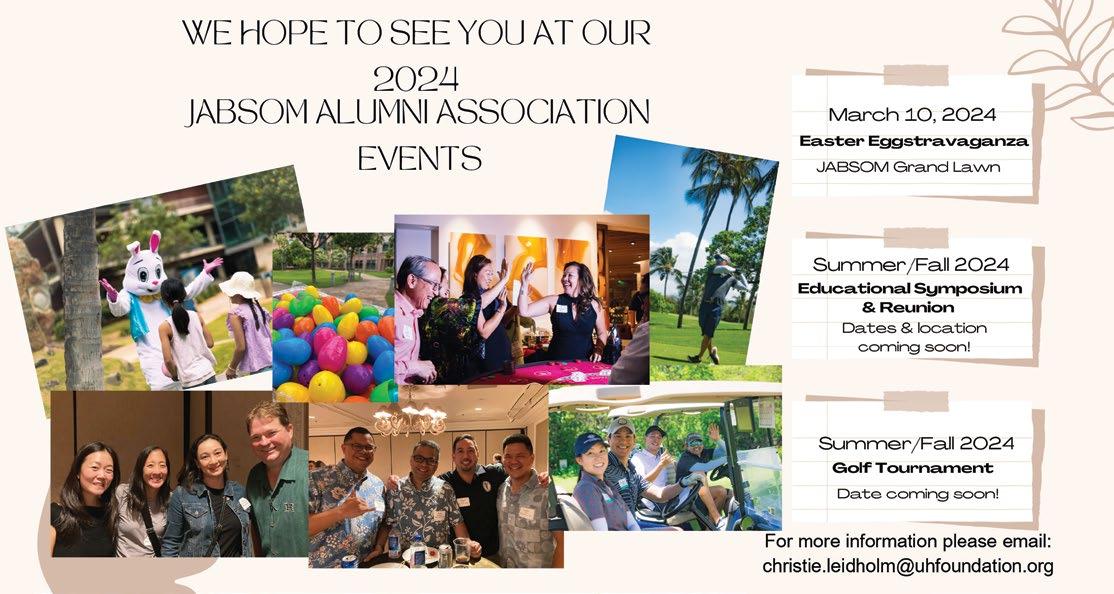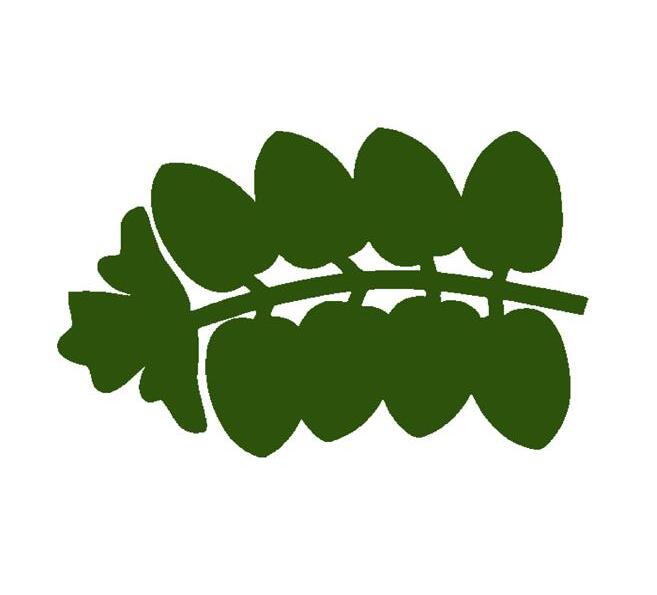 2023 - 2024
THE JOHN A. BURNS SCHOOL OF MEDICINE, UNIVERSITY OF HAWAI‘I MANOA -
2023 - 2024
THE JOHN A. BURNS SCHOOL OF MEDICINE, UNIVERSITY OF HAWAI‘I MANOA -









 2023 - 2024
THE JOHN A. BURNS SCHOOL OF MEDICINE, UNIVERSITY OF HAWAI‘I MANOA -
2023 - 2024
THE JOHN A. BURNS SCHOOL OF MEDICINE, UNIVERSITY OF HAWAI‘I MANOA -








The2023-24 edition of the JABSOM Lens is dedicated to Maui. Our faculty and students mobilized to provide immediate and ongoing care to the wildfire victims. Whether clinical and behavioral or forensic, our mission remains to provide compassionate care and partner with the larger community to help as much as possible amid this emergency.
In the pages to come, you will get a glimpse of the wide spectrum of assistance provided to Maui immediately after the fire. These are stories of survival, hope, and closure. Other stories highlight neighbor island expansion efforts, efforts to increase physicians, science and scientists from underrepresented populations, and a wide variety of activities across the many mission areas of JABSOM.
The Maui wildfire tragedy amplified and exacerbated the needs and challenges of a fragile healthcare ecosystem on the neighbor islands. JABSOM remains committed to helping
solve physician and other health and science workforce shortages, improving access to care that is relevant to specific community needs, working with communities to better understand why certain populations are more impacted by some health or mental health conditions, then working with them to design solutions, and expanding clinical training and clinical research to the neighbor islands.
During my term as Interim Dean, I aim to build on the momentum that Dean Hedges generated over the last 15 years while continuing to grow programs and research that specifically address the health disparities in our communities. JABSOM has long been an advocate for the underserved, and we continue to tailor our research to the issues that impact the people of Hawai‘i the most. As we enter a new era for JABSOM, we will continue our strong partnerships across our healthcare and public health landscape, across UH, and with communities across the state to help transform healthcare delivery in Hawai‘i. Our training programs will embrace newer technologies, team-based care, and team science, keeping our communities’ needs at the core of all our mission areas. We are not just the medical school in Hawai‘i; we’re the medical school FOR Hawai‘i. We exist to care for, support, and tackle the needs of our beautifully diverse and strong communities, in order to Attain Lasting Optimal Health for All.
Mahalo for your continued support and partnership,
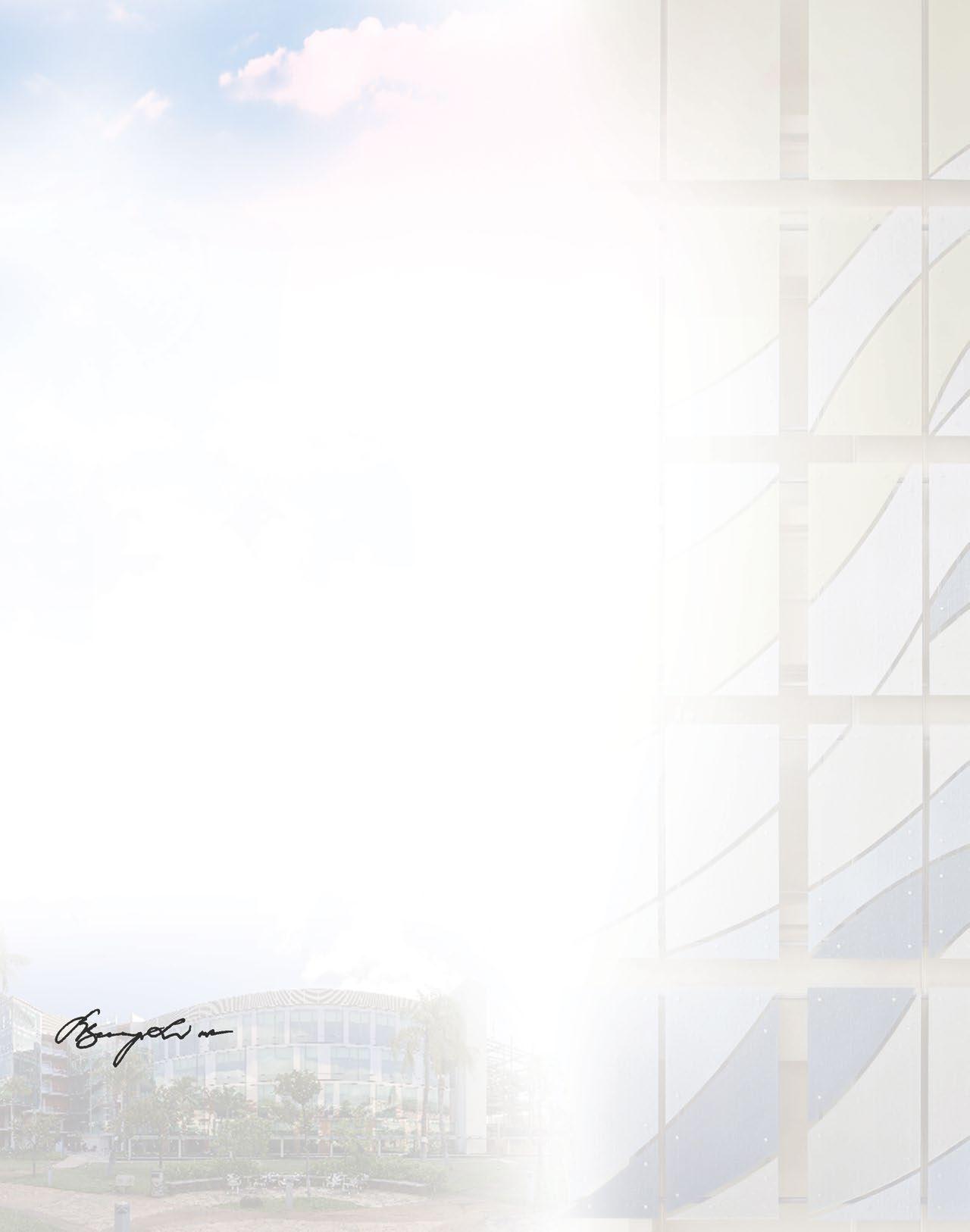 Lee Ellen Buenconsejo-Lum, MD, FAAFP Interim Dean JABSOM Class of 1994
Lee Ellen Buenconsejo-Lum, MD, FAAFP Interim Dean JABSOM Class of 1994

The third year of medical school is when students at JABSOM do their longitudinal clerkships and get a glimpse of various specialties of medicine. They learn from Psychiatry, OB-GYN, Family Medicine, Internal Medicine, Pediatrics, and Surgery preceptors.
JABSOM students Ashley Lee and Joshua Kepler chose to spend half of their clerkship year on Maui because of their ties to the Valley Isle.
“I grew up on Maui; it’s where all my family is,” Kepler said. “My grandfather, my tūtū man, has been a pediatrician on Maui for almost 50 years.” Kepler’s father, Kenneth, is a 2000 graduate of JABSOM and practices Internal Medicine and occasionally covers acute care in pediatrics at Kīhei-Wailea Medical Center.
“When I had the opportunity to return to Maui as part of my third year at JABSOM, I was really excited to go home and start connecting with patients that my family had already taken care of often,” Kepler said.
With Lee at the JABSOM house in Makawao and Kepler with family in Kīhei, the students were on Maui for two months,
soaking in the knowledge passed down by the doctors who taught them each day.
“We did hands-on clinical care,” Lee said. “We would see patients, present them to our faculty supervisor or preceptor, and devise a plan together. This allows us to apply what we learned in the first two years and learn more by doing.”
The two months on Maui allowed the JABSOM students to find their groove. They connected with their preceptors and patients and were familiar with their rotations.
That normalcy would be shattered on August 8 when strong winds brought on by Hurricane Dora ignited an inferno that set downtown Lāhainā ablaze. According to Maui County, the fires burned more than 2,100 acres and claimed the lives of 101 people.
“Lāhainā was known as the land of the ali‘i. A lot of the ali‘i went to Lahainaluna. It was the former capital of Hawai‘i, where King Kamehameha III lived. There were a lot of fish ponds, a lot of great cultural history, and even a burial ground for Princess Nahi‘ena‘ena and Kuini Liliha,” Lee said. “I think a lot of my community there is feeling the loss of their history and their culture.”
Like many on Maui, the wildfires caught the JABSOM students off guard.
“I went home Tuesday night, and around midnight, our family got an emergency call notification to evacuate our house,” Kepler said. We didn’t think the fires were that close at the time, but in an abundance of caution, we left. We could return that next morning, and that’s when the news broke to pretty much everyone. At the time, we had no idea the extent of what
had happened in Lāhainā. There was no electricity or cell, so I was just as in the dark as everyone else.”
Overnight, the third-year medical students would pivot from learning to doing. Over the next two weeks, they’d provide handson care for the hundreds who survived the deadliest US wildfire in over a century. Each student would treat or interact with upwards of 20 people daily in the two weeks after the fire, under the supervision of their dedicated faculty.
“A lot of people had burns on their arms, their feet, a lot of people fled on foot from Lāhainā,” Kepler said.
“We started going to the shelters with our preceptors, and then I think that’s when we really saw the extent of it firsthand,” Lee said. “We saw all the wounds, the burns, and the mental health extent of it, too.”
The ties that brought our students to Maui also connected them to the tragedy. They, too, know people who lost everything.
“My cousin was living in Lāhainā for 15 years,” Lee said. “He was a DJ at some bars in Lāhainā, and he was living right on Front Street. He contacted us and told us that he just got out with his car, his laptop, and the shorts that he had on. No slippers, no shirt,
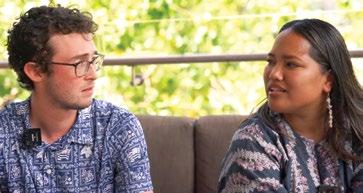

he lost his house. It became more real for me when I knew somebody affected by that.”
Connecting with survivors became the new mission for the JABSOM students. They went to shelters at Maui High School and War Memorial Stadium, but they say the people there were just a fraction of the true number of people needing care.
“Most of the local people had family on Maui, so they weren’t at the shelter. Those are the people who needed help, but they weren’t coming out for help,” Lee said.
Lee partnered with Mauna Medic Healers
HHui, a grassroots Native Hawaiian medical care organization, and went into Lāhainā.
“A lot of them were just scared to leave where they were,” Lee said. “They didn’t know if the roads would be closed or if they could come back in if they went out to get resources or donations. They didn’t even want to go out a few minutes to the gateway center where they were distributing donations because they would have to drive past the fire, which was very traumatic for them. So we did a lot of house calls. We went to hotel rooms and talked to anybody staying at the beach parks.”
The boots-on-the-ground approach allowed Lee to connect with patients who otherwise would likely be alone. She and Kepler practiced the skills they honed for the last two months and served the community in ways they never had before.
“The survivors would text the organizers of those different hubs and say, ‘We’re in this room at this hotel, and my baby is having a hard time breathing, and I don’t
alf a year after the tragic wildfires, JABSOM remains involved in the healing and recovery process. In February 2024, the Maui Wildfire Cohort Exposure study was released, showing that nearly 75% of those surveyed may suffer from respiratory issues. The study was led by JABSOM’s Alika Maunakea, PhD. “We would expect to see these acute conditions appear in a community that’s been affected by the wildfires,
want to leave here.’ We would send a team immediately and rush to the hotel,” Lee said. “There were a lot of kids too. We talked to a 15-year-old who refused to come out of his room because he was scared. We went to a hotel, and there was a baby with Down syndrome who had a G tube, and he was having a hard time breathing. We had to counsel the families and convince them to leave to seek more help.”
“I’m grateful that the majority of the Maui community has been able to come together so quickly,” Kepler said. “We haven’t, at least in my lifetime, had a disaster like this on Maui. Immediately, everyone was doing everything they could to help out. Donating goods, volunteering at the shelter, flying helicopters, and driving up their boats. The entire island is coming together as one to provide aid in any way we can.”
Scan to watch our video

especially the mental health issues,” Maunakea said, as quoted in the Star-Advertiser. “That was unfortunately not surprising, but very sobering to know that it’s pervasive.” Shedding light and taking action on these issues now will hopefully decrease the chances of long-term chronic diseases in fire victims in the future. The hope is that the study will eventually expand to include children and first responders.
49% said their health is now worse than last year (prior to wildfires)
55% are exhibiting depressive symptoms (compared with 33% previously)
24% reported not having regular access to medical care
74% may be experiencing poor respiratory health
49% exhibiting signs of mild to severe lung obstruction
21.5% have high blood pressure (stage 1 and 2 hypertension)
*Self-reported
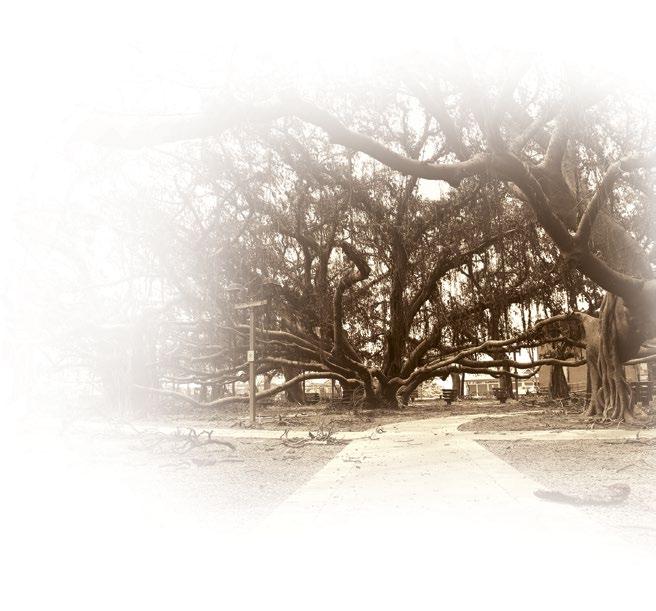
Renowned forensic anthropologist Dr. Robert Mann, professor of anatomy and pathology at JABSOM was sent to Maui to aid in the identification efforts of the victims in the deadliest U.S. wildfire in more than a century.
“It was unlike anything I really expected,” he said. State officials called on Mann for his vast experience in helping families identify loved ones in some of the world’s largest disasters and tragedies. As a forensic anthropologist, he helped identify the remains of victims from 9/11, the Indian Ocean tsunami, and multiple plane crashes.
“Even with all the mass disasters I’ve done and all, every single one of them is different. The Maui wildfire disaster certainly was different,” he said.
As a forensic anthropologist, Mann uses bones and bone fragments to help identify remains. The disaster on Maui proved difficult. According to Maui County, the scope of the disaster scene in Lāhainā was 2,170 acres. Mann said the temperatures from the inferno and the gusts from Hurricane Dora also posed challenges in the recovery and identification effort.
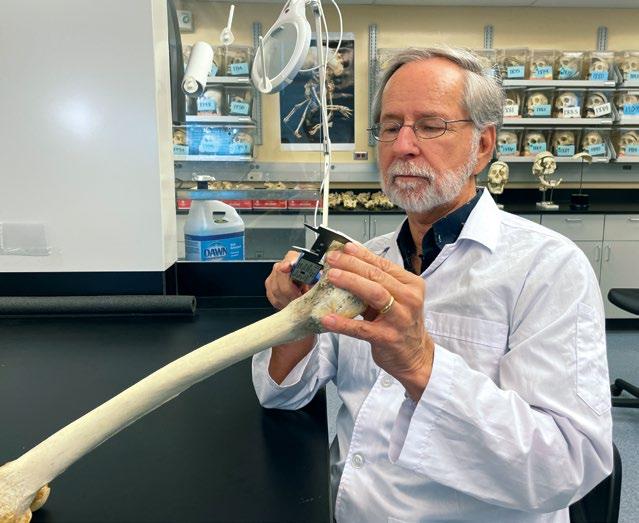
sex of a victim. So although the dentists do the teeth, we do the bones, and the pathologists do the bodies, we work as a team.”
“This is not an airplane crash where you’ve got 20 people that are manifested on the airplane. This is a huge area, and the perimeters are extremely big,” Mann said. “One of the complicating factors would be the high winds. Those winds will move things that were at one point here and then end up being a hundred feet away.”
A team of forensic pathologists, forensic anthropologists, dentists, radiologists, fingerprint technicians, DNA specialists, firefighters, police and FBI agents were all sent to aid in the recovery and identification efforts. While others were sifting through the disaster site looking for remains, Mann was one of three forensic anthropologists at the morgue, working with located remains, trying to make the connections to the identities that loved ones are desperately seeking.
“Forensic pathologists are not trained to identify bone fragments or tell you anything about it,” Mann said. “We will pick the bones up and offer insight. We can tell if something is a right ulna or a left leg. This can then lead to identifying the age or biological
Mann has worked at JABSOM for the last eight years and has called Hawai‘i home since the 90s, so there’s an added reverence when he assisted on Maui.
“This is in our own backyard,” he said. “This is home for many of the people who are working this. You run into people at the scene who lost somebody, and it’s a very personal thing for them. It becomes very personal for those of us working with them. Because this is in our own backyard, we want to do it right, and we’re going to do our best to continue to do the right thing.”
Mann’s osteology and forensic anthropology lab at JABSOM is the only one of its kind in the state. It assists in mass disasters like what we’re seeing on Maui, but it also educates doctors in bones and bone disease and trauma.
“Hawai‘i hadn’t had this kind of a lab until now,” Mann said. “So this is Hawai’i’s lab, and I hope every state in the United States has a forensic lab like this. I think we’re doing our best, and I think we’re getting to be a gold standard for the way skeletal labs are structured.”
To highlight the impact of the Kaua‘i Medical Training Track (KMTT), the JABSOM Media and Communications (JMAC) developed a three-part series titled “The Road to Improving Rural Health.” The series includes interviews from Kaua‘i residents, JABSOM medical students who are part of the KMTT, preceptors, and healthcare leaders in the community. The full videos are available to watch on YouTube in their entirety.
The need for physicians and specialists is most significant in rural areas, especially neighbor islands like Kaua‘i. Having students live, learn, train, and eventually serve residents of the Garden Isle is just one part of the solution. It’s how JABSOM is trying to help.
34
Jamie Emoto was born and raised on Kaua‘i. She never thought she would be back so soon, learning and training at home. Part two of our series spotlighting the Kaua‘i Medical Training Track introduces you to one of the program’s students. It chronicles her life on Kaua‘i, her path to medicine, the local inspiration she drew upon and the gratitude she has to be able to return and serve the community.
learners since January 2023
• 6 KMTT MS1 (Cohort #2)
• 6 KMTT MS2 (Cohort #1)
• 7 MS3s
• 10 MS4s
• 4 Family Medicine residents
• 1 OB-GYN resident
8
training sites
The Kaua‘i Medical Training Track is powered by its preceptors. These physicians take the KMTT students under their wing and show them the nuances of providing rural health care. We meet Dr. Manon Kwon in part three of our series spotlighting the Kaua‘i Medical Training Track. Transplanted from California, she shares her inspirational story of how she ended up on Kaua‘i teaching our students and the fulfillment she gets from her service.


70

faculty preceptors
• 3 primary care fields
• 10 different specialties
• Ranging from Waimea (west side) to Kapaa (east side)
• 3 health systems (HPH, HHSC, Ho’ola Lahui)
Scan to watch all 3 videos
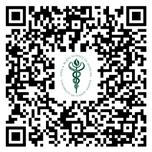
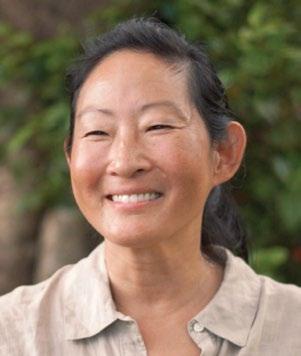

Weeks before announcing her resignation, Dr. Rochelle Walensky made JABSOM one of her final stops before departing as the CDC director.
Walensky led the nation through the “back to normal” phase of the COVID-19 pandemic. In a forum with students, faculty, and members of the public, she shared what it was like to guide the country during that time while acknowledging the healthcare workers who were on the front lines for years.
“We have this incredible opportunity (in healthcare), this incredible gift that we get to do the work we do and give back to people.
Embrace that gift every day,” Walensky said.
During the forum, Walensky shared career advice, discussed gender bias in medicine and academia, and gave five lessons. Walensky’s overarching message for our students was to “embrace the pursuit” (of medicine).
During her two-day visit, Walensky made it a point to connect with students. After a brief one-on-one chat with Anson Lee, the medical student walked away with appreciation for Walensky’s commitment to health in the Pacific.
“For her to come to the UH medical school, I think it’s pretty crucial, especially because we’re in the middle of the Pacific and there are various patient populations here which you might not see on the continental US and so the fact that she’s willing to speak with us here and try to get a better perspective on the challenges that we’re facing in Hawai‘i– it’s great,” he said.
Walensky also shared five lessons that have led her to where she is today:
1
2 3 4 5
Connect with your work ~ Follow that which intrigues you and keeps you motivated.
Health care is for everyone, but especially the underserved.
Ask the big questions, then learn from any inevitable shortcomings and overcome them– it’s not the answer to the question that’s most important but embracing the pursuit of it.
Surround yourself with people who are smarter than you and who disagree with you.
Aim big ~ if you don’t have a little bit of imposter syndrome, then you are not striving high enough.
JABSOM
medical students are reshaping health education in Hawai‘i high schools through Project HEART—Health, Exercise, and Rescue Together. The initiative, led by Anson Lee (2025) and Jonathan Hu (2025), addresses cardiovascular health and inspires high school students to consider careers in STEM and medicine.
Despite cardiovascular disease being a leading cause of death in Hawai‘i, with Native Hawaiians and other Pacific Islanders (NHPI) experiencing disproportionate
rates of death from heart attack and stroke, less than half of NHPI adults know how to recognize the common symptoms of a heart attack or what to do when it happens. Project HEART fills this gap with a problem-based learning curriculum, offering early access to heart disease education. Lee also hopes that the program’s hands-on CPR training will one day save lives by educating high schoolers on what to do in an emergency where someone needs CPR.
Beyond Farrington, the initiative has
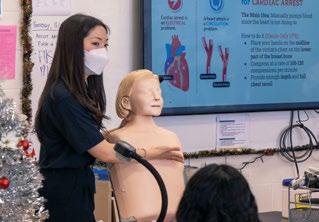
expanded to other high schools on O‘ahu, including Nānākuli, Roosevelt, Wai‘anae, and Kalani, with JABSOM students hoping to expand further to the other islands and shape healthier and more informed communities.
Solidifying the John A. Burns School of Medicine as one of the top institutions for Primary Care, the U.S. News & World Report has placed JABSOM 16th in the nation in its 2023’s “Best Medical Schools” rankings.
This is the fourth time in six years that JABSOM has made the top 25. Consistently landing in the top quartile of 130 ranked schools from 194 allopathic and osteopathic medical schools in the U.S. puts JABSOM in rarified air.
“Since JABSOM’s foundation in 1965, we have worked very hard to create physicians who will meet the needs of Hawai‘i. Certainly, our primary care physician faculty members, meaning those who practice in family medicine, internal medicine, pediatrics, and for this (USNWR) definition, geriatrics, work throughout the four years of medical school to ensure that all of our students are exposed to the values of primary care that emphasize the connection with patients, their families, and the community and the need for better coordination of care,” said Interim Dean Lee Buenconsejo-Lum, MD.

Securing this spot in the U.S. News and World Report rankings increases JABSOM’s visibility nationwide, making Hawai‘i one of the best places to train to become a physician.
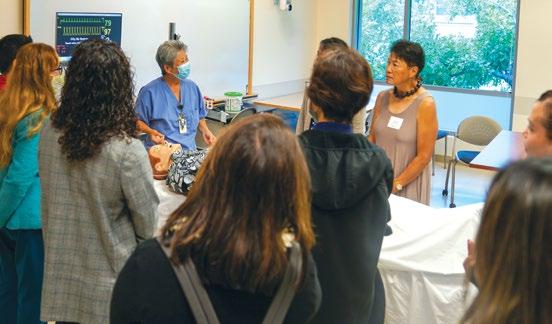
For many healthcare professionals, their career goals started with a dream. JABSOM’s Huaka‘i initiative is trying to inspire the next generation of physicians to dream big.
Last spring, Huaka‘i, which means “voyage” in ‘ōlelo Hawai‘i, hosted more than 100 academic advisors and career counselors from middle schools and high schools across Hawai‘i for an interactive symposium to help their students start their voyage
toward a medical career.
“It’s just planting these seeds of ideas that it is possible,” said Associate Director of Admissions Dr. Jaimie Tom. “What goes from being a dream, then becomes a goal. Then you have a plan, and you have people around you to support you and encourage you to really guide you. It’s really about exploration.”
The high school advisors and counselors got an up-close, hands-on look at various JABSOM programs and departments, including Pre-Health Advising Center, Rural Health, Native Hawaiian Health, and Anatomy.
“These are all departments housed in JABSOM that are doing wonderful things to outreach to the community, so it’s really about showcasing all of our talents here,” said Tom. Huaka‘i’s inaugural symposium was a success as educators left with new ideas for partnering with JABSOM.
Underlining the state’s support for JABSOM’s efforts, Governor Josh Green, UH President David Lassner, and Department of Education Superintendent Keith Hayashi all attended and spoke at the event.
Dr. Pakieli Kaufusi’s journey, rooted in Tonga, led him to address health disparities and inspire Pacific Islanders in Science, Technology, Engineering, Mathematics and Medicine (STEMM). Inspired by his parents’ creative and unique solutions to solving problems on the family farm, he took an avid interest in research and pursued his Master’s and PhD at JABSOM. Kaufusi’s passion for research and community culminated in the creation of the Pathways for the Advancement of Pacific Islanders (PAPI).
Launched in 2023, PAPI targets academic barriers hindering Pacific Islander students. Despite being one of the fastestgrowing ethnic populations in the state, they still experience persistent barriers to accessing higher education.
“The fundamental issue here with
Pacific Islander students is academic readiness and educational equality,” said Kaufusi, an assistant professor in the JABSOM Department of Tropical Medicine, Microbiology and Pharmacology.
PAPI’s goal is clear: promote enrollment, retention, and graduation of Pacific Islander students in universities, guiding them into STEMM-related fields.

The immersive PAPI experience exposes high school students from across the Pacific Islands and UH community college students to various STEMM initiatives throughout the university, including hands-on activities at JABSOM’s SimTiki simulation lab.
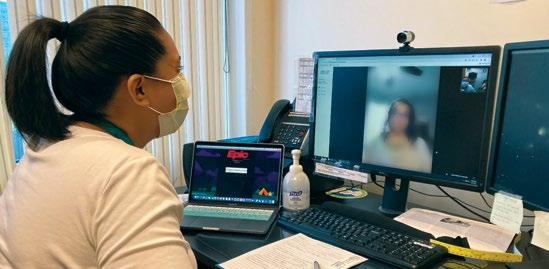
At a moment’s notice, the pandemic forced many healthcare workers to pivot and rely on telehealth. As devastating as it was, if there were a silver lining to the pandemic, it would be the realization that telehealth worked.
“COVID was a great natural demonstration that we can do it,” said Dr. Men-Jean Lee, director of the JABSOM Maternal-Fetal Medicine Fellowship Program. “In maternal-fetal medicine, we were the highest utilizers of telehealth. Compared to all other subspecialties, we had over 50% of our patients being seen by telehealth visits.”
Looking ahead, Kaufusi envisions expanding PAPI’s reach beyond UH Mānoa and acknowledges the collaborative efforts of the UH schools, including the College of Engineering and the Thompson School of Social Work and Public Health. The ultimate goal is to create lasting impacts on Pacific Island communities, motivating individuals to pursue healthrelated fields.
Now, JABSOM and the Pacific Basin Telehealth Resource Center (PBTRC) want to build on that momentum. With an emphasis on rural areas, leaders from local health plans, hospital systems, JABSOM, and the community shared their ideas on expanding maternal telehealth at a conference on the UH Mānoa campus last summer.
“An ultrasound probe can be attached to a cell phone or an iPad,” Lee explained. “We then have a medic or a mobile technician do the ‘street ultrasound’ by meeting the patient where they’re at.”
The physician would connect with the medical professional on the ground via a computer or tablet and guide them as they performed the ultrasound.
These virtual exams are examples of what already works, and the future for maternal telehealth is bright because those spearheading the effort are partnering with University Health Partners of Hawai‘i to hire more digital navigators. Hawai‘i libraries are also getting involved by setting up telehealth kiosks in libraries across the state for patients to visit and conduct their telehealth appointments.
Our Hawai‘i “melting pot” calls for special attention to science and studies relevant to our diverse population. JABSOM aims to train future researchers to treat these needs with two game-changing programs designed to bridge gaps and empower underrepresented scientists. What’s truly special is the community fostered by these programs.
The Minority Health Research Training Program (MHRT) is an immersive 8-month journey that propels underrepresented students into the world of research. It’s not just a program; it’s a springboard. Picture a dynamic mix of a Spring course, pre- and post-summer research training workshops, topped off with a transformative 2-month summer mentored research experience. As of Fall 2023, 10 previous trainees have gone on to JABSOM as medical degree candidates. Three previous trainees have continued on to pursue PhDs, and 12 have gone on to JABSOM Master of Science (MS) and certificate programs. Other students have been enrolled in MD and PhD programs on the continental U.S.
The Maximizing Access to Research Careers at the University of Hawai‘i Mānoa (MARC-UHM) is a pathway program for underrepresented STEM enthusiasts. With 60% tuition support, a monthly stipend of $1160 and a comprehensive 2-year mentored research project, MARC is more
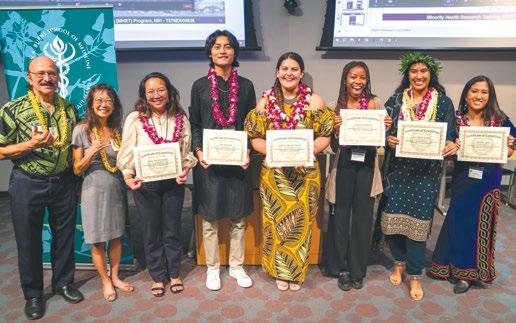
than a program—it’s a launchpad for future scientists.
MHRT and MARC are on a quest to ignite a passion for biomedical and STEM careers among underrepresented students, encouraging them to take the leap into graduate studies. The JABSOM Department of Tropical Medicine, Medical Microbiology, and Pharmacology at JABSOM leads these initiatives, funded by grants from the National Institutes of Health.

The National Institute of General Medical Sciences (NIGMS) has renewed funding for another five years for a JABSOM program that builds the foundation for the next generation of biomedical researchers. The Institutional Development Award (IDeA) Networks of Biomedical Research Excellence (INBRE) program in Hawai‘i sees Dr. Dr. Peter Hoffmann step into the role of
principal investigator, succeeding Dr. Robert Nichols, while Dr. Ben Fogelgren assumes the position of program coordinator.
Situated at JABSOM, HI-INBRE is a catalyst for bolstering biomedical research across Hawai‘i. This grant renewal empowers JABSOM to continue expanding STEM education and fortify biomedical research expertise at institutions across the state through partnerships with UH Maui College, Kapi‘olani Community College, Hawai‘i Pacific University, and Chaminade University.
INBRE’s significant influence is evident in engaging over 600 students from diverse backgrounds in the past five years, establishing a robust “pipeline” for biomedical research careers. Lance Nunes, a Farrington High School graduate now pursuing a doctorate at JABSOM, attests to the program’s transformative impact.
“INBRE is one of the main reasons I became a scientist. Going through undergraduate school, you try different things. You never know what you want to do until you try it, and INBRE introduced me to different research labs. I found people willing to spend time nurturing future scientists’ education and skill sets,” Nunes said.
mourns the loss of renowned scientist Dr. Ryuzo Yanagimachi, whose pioneering contributions to reproductive biology and cloning have impacted millions of people and allowed families to grow. He made numerous breakthroughs in fertilization techniques, including Intracytoplasmic Sperm Injection. These techniques are now used around the world in human infertility clinics. Yanagimachi died on September 27, 2023, at 95.

Born on August 27, 1928, in Hokkaido, Japan, Yanagimachi earned a Bachelor of Science in Zoology in 1953 and a Doctor of Science in Animal Embryology in 1960, both from Hokkaido University. The years after were marked by challenges, as he initially struggled to secure a research position, leading him to work as a high school teacher for two years. He would always remember this experience and actively assisted those he mentored in the future.
In 1960, Yanagimachi’s career brought him to the U.S. when he joined Dr. M.C. Chang at the Worcester Foundation for Biomedical Research, where he developed the techniques to fertilize hamster eggs “in vitro.” In 1966, he was recruited to the UH Mānoa and moved to Hawai‘i, a place that he and his wife, Hiroko, would ultimately call home. He joined the JABSOM Department of Anatomy and Reproductive Biology as an assistant professor. Over his 38-year tenure and 18 years as Professor Emeritus, Yanagimachi’s 57 combined years were marked with many achievements recognized globally.
At the age of 69, Yanagimachi cloned the world’s first mouse in 1997. This groundbreaking research was published a year later in the journal Nature, detailing how he removed the nucleus from a somatic cell and injected it into an egg that also had its nucleus removed. The egg, bathed in a chemical solution and cultured, developed into an embryo, which was then implanted into a surrogate and allowed to develop. It is now known as the “Honolulu Technique.”
Through this technique, “Cumulina,” the world’s first successfully cloned mouse and the second mammal ever cloned from an adult cell, was born. Cumulina symbolized the incredible possibilities unlocked by Yanagimachi’s pioneering work; the mouse is now in the Smithsonian in Washington D.C.
Shortly thereafter
Yanagimachi once again received world-wide acclaim for creating the first transgenic “green” mouse in 1999. He transferred a green fluorescent protein from jellyfish DNA into the mouse egg, which caused the mice to glow green when exposed to infrared light.
In 2000, he founded and directed the UH Mānoa Institute for Biogenesis Research. Devoted to studying embryogenesis, stem cell development and transgenesis technology, the institute would continue to push the boundaries of science. Though he officially retired in 2005, he continued active research in his laboratory.
Associate Dean for Research Dr. Mariana Gerschenson, remembers Yanagimachi, or “Yana,” as he was fondly known. “He was an innovative scientist and a great mentor. He inspired the faculty, staff, post-doctoral fellows, and students. He will always be part of our ‘ohana,” she said.
Throughout his illustrious career, Yanagimachi would also remember to pave the way for future scientists. He mentored and inspired up-and-coming researchers like Dr. Monika Ward.
“My journey began in 1999 when I moved from Poland to Hawai‘i as a graduate student. I wanted to work in Dr. Yanagimachi’s lab, but he didn’t have a spot for me then. He encouraged me to write for fellowships and grants. After writing for four or five grants, he was impressed with my determination, and the following year, I got hired,” she said.
Current IBR Director, Dr. W. Steven Ward, said that the IBR has flourished because of Dr. Yanagimachi’s initial leadership and continued example of excellence. “The IBR is populated by scientists who were trained by Yana or recruited by him to join the work,” W. Steven Ward said. “It is now a well-established research institute world-renowned for its work on reproductive and developmental biology. Throughout his tenure at the IBR, he was a constant source of possible new projects and a wealth of instant knowledge of the field.”
Yanagimachi received numerous awards, including the 1996 International Prize for Biology, Japan’s highest scientific award, and the 1999 Carl G. Hartman Award, the Society for the Study of Reproduction’s greatest honor. He was inducted into the National Academy of Sciences in 2001.
Most notably, Yanagimachi was one of three recipients honored this year with the prestigious Kyoto Prize, an international award presented to individuals who have made significant contributions to science and technology, as well as the arts and philosophy. Many compare it to the Nobel Prize. Yanagimachi was recognized in the Biotechnology and Medical Technology category for his significant contributions to developing essential assisted reproductive technologies in modern society, giving hope to couples who otherwise would be unable to have children. He was scheduled to accept the award in November 2023.
“Dr. Yanagimachi’s research into cloning and IVF changed the world,” said Interim Dean Dr. Lee Buenconsejo-Lum. “Yana’s breakthroughs in cloning and IVF helped make the world a happier place for millions of families. His legacy is etched in history and at JABSOM. We are so honored that he was part of our ‘ohana for so many years.”
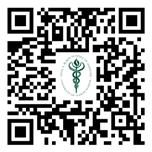

Watch Kyoto Prize Laureate Introduction: Ryuzo Yanagimachi, filmed a few months prior to his passing
1960
Joins his mentor Dr. M.C. Chang at the Worcester Foundation for Biomedical Research
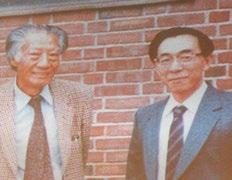
1966
Moves to Hawaiʻi with his wife, Hiroko, and joins UH Mānoa faculty
1997
Cumulina, the world’s first mouse is cloned from an adult somatic cell
1999
The creation of transgenic mice that glowed green, which also went on to produce pups with the same glowing green gene

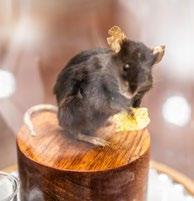

2000
Yana founds the UH Institute for Biogenesis Research
2005
Yana officially retires while continuing active research

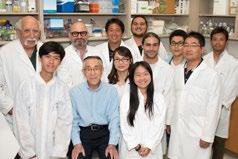
2019
Yana’s 90th birthday coincides with the Inaugural Yanagimachi Symposium
2023
Recipient of the prestigious Kyoto Prize Award



UHMānoa is being proactive in preventing future pandemics through One Health. The concept of One Health is not new. It’s an approach that recognizes that the health of people is closely connected to the health of animals and our shared environment. After the COVID-19
pandemic, this message is more important than ever before.
With a renewed emphasis on the approach, the University of Hawai‘i launched the One Health Interdisciplinary Undergraduate Certificate Program which prepares students with the skills and knowledge to work collaboratively across disciplines to solve real-world problems using the One Health approach.
One Health is also getting endorsed by the state as Gov. Josh Green signed a proclamation declaring January as One Health Month in Hawai‘i.
“This makes this a watershed moment for this initiative!” said Dr. Sandra Chang, program
InJuly, Dr. Claire Townsend Ing received a prestigious National Institutes of Health (NIH) award for its potential impact on the health of thousands of families in Hawai‘i.
Ing is the principal investigator for “PILI ‘Āina,” a project that works on individual, household, and community levels to educate those at risk for cardiometabolic disorders, which include diabetes, heart attacks and strokes– all of which are in the top 10 leading causes of death in Hawai‘i, according to the Centers for Disease Control and Prevention.
Ing’s passion for health, especially those facing health disparities, formed when she was a young girl growing up in Maryland. Her father is half black and half Okinawan. Her mother was white.
“My dad’s dad passed away when I was 12 or 13,” Ing said. “I knew the health disparities were not due to a difference in work ethic. It wasn’t for a lack of caring. My dad’s dad was from the Mississippi Delta and lied about his age in 1941 to get out of the Delta. He ended up getting shipped out during the war. So it’s not like one grandad sat on the couch and ate bonbons while the other ran marathons.
director and JABSOM professor.
The unique approach also caught the attention of Japan with Fukuoka Governor Seitaro Hattori coming to JABSOM to sign a historic Memorandum of Understanding (MOU), alongside UHM President David Lassner, to mutually promote One Health research, education and human resource development. The MOU culminated from months of discussions between JABSOM faculty and students, led by Chang and members of the Fukuoka Prefectural Assembly and Fukuoka universities leadership.
Over 30 representatives from Fukuoka, Japan, and Hawai‘i attended the signing ceremony in Kaka‘ako.
One grandad had a harder road ahead of him because of who he was, when he was born, and where he was born.”
A turning point in Ing’s career was meeting Dr. Joseph Keawe’aimoku Kaholokula, professor and chair of the JABSOM Department of Native Hawaiian Health. Under his mentorship, he encouraged her to grow the PILI ‘Āina Project to tackle the underlying issues around cardiometabolic disease.

PILI ‘Āina focuses on healthy eating, being physically active and managing stress and time. It goes the extra mile by introducing families to gardening and growing produce and fruits.
“It’s not just targeting folks, telling them to eat healthier, but giving them the tools to do it,” Ing said. “Trying to understand, address, and eliminate health disparities is not just the helpful thing to do, but it’s the right thing to do.”
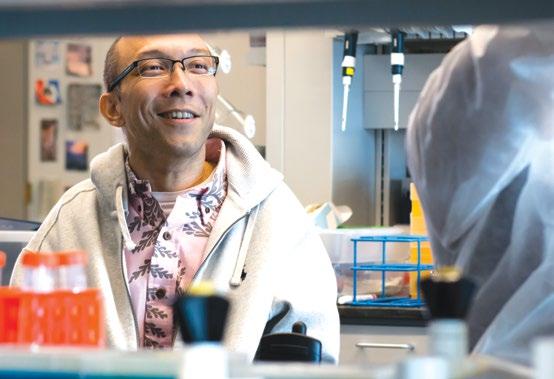 Jonathan Yap, PhD
Jonathan Yap, PhD
Whenit comes to research tiers, a volunteer is akin to an entry-level position. In 2011, Jonathan Yap entered Dr. William Boisvert’s lab as a mere volunteer. Twelve years later, thanks to a coveted National Institutes of Health (NIH) grant, Dr. Yap will become a principal investigator,
the highest level of the research tiers.
This achievement is rare for many researchers but even more impressive, considering Yap has never been able to do hands-on lab work due to a spinal cord injury from a body-surfing accident in high school that
rendered him quadriplegic. Despite the setback, Yap persisted.
Boisvert emphasizes that making the leap from volunteer to principal investigator in 12 years is remarkable. “For able-bodied people, going from volunteer to PI is unusual,” Boisvert said. “Jon climbed the ladder as fast as anyone really could.”
In the lab, Yap worked closely with technicians who provided a pair of hands to do the work that Yap could not physically do due to being paralyzed in the arms and legs. In 2019, he received his PhD in cell and molecular biology, investigating heart health. With heart disease being a leading cause of death in Hawai‘i, it’s a topic that hits close to home for the Native Hawaiian doctor.
“I want to do work that serves the community. I want to help grow and better the entire community,” Yap said.
Yap’s research hones in on what happens to the heart after a heart attack and how to speed up the recovery for those victims.
Yap acknowledges his path to the K99 could not have been possible without Boisvert taking that chance on him in 2011 and bringing him in as a volunteer.
“Everything I learned about science, I learned from Bill. I trust him as much as I would anyone in my family. I’m not going to say he’s a father figure because he’s not that much older, but he’s like that cool older cousin who has your back. I always felt that way,” Yap said.
Dr. Monika Ward, a leader at the JABSOM Institute for Biogenesis Research (IBR), has been honored as a distinguished fellow by the Society for the Study of Reproduction (SSR). The recognition highlights her significant and sustained contributions to the field.
The IBR, renowned for its expertise in mouse reproductive biology, stands out globally for advancements in techniques such as sperm injection into eggs and mouse cloning. For over a decade,
Ward’s lab has made groundbreaking strides in mouse reproduction, particularly focusing on the genetics of the Y-chromosome gene. She demonstrated that the essential genes for male mice are not exclusively on the Y-chromosome, challenging previous notions.
Ward’s impact extends beyond her publications, as evidenced by her service on the SSR Committee for the past five years and her role on the editorial board of the Biology of Reproduction journal.

“Ifit were not for ‘Imi, I would not be sitting in this chair right now.”
Those are the words of Dr. Gerard Akaka, vice president of Native Hawaiian Affairs and Clinical Support at the Queen’s Health System.
JABSOM’s ‘Imi Ho‘ōla Post-Baccalaureate program is one of six of its kind across the nation that provides those who graduate with a conditional acceptance to a U.S. medical school. Akaka’s sentiments are shared by the hundreds who have completed ‘Imi Ho‘ōla.
Since its inception, the program is credited with putting more than 300 people from underserved communities on the path to medicine.
‘Imi Ho‘ōla, which stands for “those who seek to heal,” was founded by Dr. Benjamin Young, one of the first Native Hawaiian physicians and the first Native Hawaiian psychiatrist. The program began as a premedical enrichment program for Native Hawaiian and Pacific Islander students. The goal to create physicians who reflect the communities they serve has evolved to meet the needs of disadvantaged students from all backgrounds. ‘Imi
Ho‘ōla does not make admissions decisions based on ethnicity or race.
“We want to meet the needs of those students who would not have the chance to enter JABSOM through its regular admissions pathway,” said Program Director Dr. Winona Lee. “They may be first-generation college students or English language learners. Our program opens the door and allows them to walk through to give them that opportunity to really serve the people of Hawai‘i.”
For the last 50 years, many ‘Imi graduates have made indelible impacts on the health of Hawai‘i and beyond. Dr. Nanette Judd, former ‘Imi Ho‘ōla director, emphasized that many have gone on to hold key leadership positions at JABSOM and throughout the state.
“Mentorship is so important because when the students see them, they know they can do it, because they’re being mentored by people who have done it.”
Knowing the value of the program, D-Dré Wright, JABSOM 2026 class president, declined other medical school acceptance letters and took a chance with ‘Imi, although there was no
guarantee she would pass.
“It was a risk, but I knew that I wanted to practice in Hawai‘i and what better place to learn how to care for the people you hope to serve than by learning in the facility out there serving the community,” Wright said. “Not only did ‘Imi provide me with a foundation of the clinical sciences, but it also instilled and strengthened this mental toughness that I can take with me as I pursue a career as a physician.”
Hundreds gathered to celebrate the program’s golden anniversary in October 2023, where Akaka reminisced about those who were involved in the early days of ‘Imi, noting Drs. Ben Young, Kekuni Blaisdell, Nanette Judd and JABSOM Dean Terence Rogers. “I was around when those guys were dreaming about this,” he said.
“We are fulfilling the dream. When you look at the D-Dré’s and the other ‘Imi’s, and what they’ve gone on to do, the quality of their work and the heart–it’s their pono, humble, hard-working, and wanting to serve. I think they would be proud and happy that ‘Imi is in good hands and on the path they always hoped and prayed for.”
52% Female
48% Male
East
JABSOM opens as a 2 year college in medical sciences
1970
Dean Windsor Cutting established “Dean’s Guests Program” to “invite” ten “guests” to enter medical school under an expanded program whereby these students would take 5 years instead of four years to graduate. Tutorials in the basic sciences were mandated.
SEPTEMBER 1973
Founding of ʻImi Hoʻōla by Dr. Benjamin Young
1973
JABSOM expanded as a 4-year medical degree granting school
APRIL1977
First class traveled to Kalaupapa for service learning
1989
Problem-Based Learning (PBL) Curriculum established
1991
Native Hawaiian Center of Excellence established
JULY 1996
Restructuring to Post-Baccalaureate Program with conditional acceptance to JABSOM
2002
Dean Edwin Cadman established Department of Native Hawaiian Health within JABSOM
JULY 2003
Queen’s stipend awards begin to support students during the program
DECEMBER 2010
Dr. Nanette Judd’s retirement as program director
JANUARY 2011
Dr. Winona Lee selected as ʻImi & NHCOE Program Director
2019
ʻImi scholars full in-state tuition scholarship established
JUNE 2022
First all-female cohort completed ʻImi Hoʻōla
OCTOBER 2023
ʻImi Hoʻōla celebrates its 50th anniversary
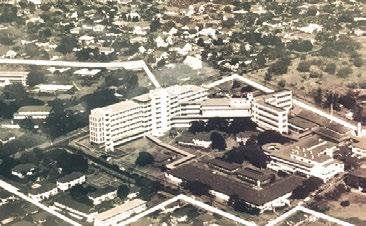









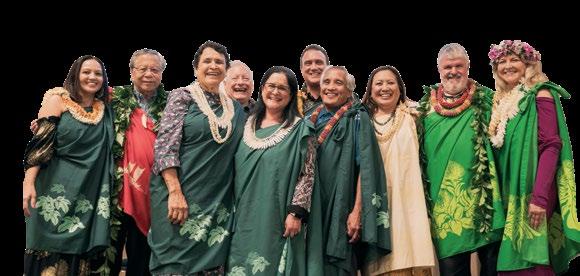
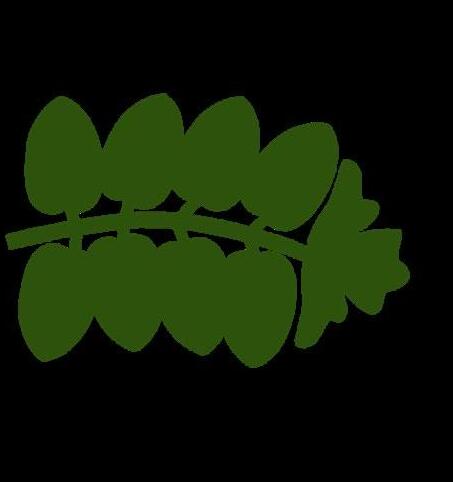
64% of the Class of 2023 matched into primary care-front line specialties.
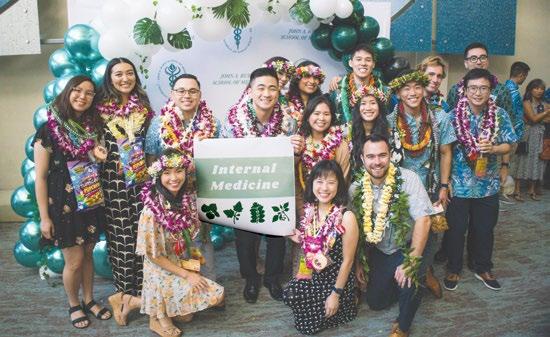
Alyssandra Baniqued receives her envelope for Match Day
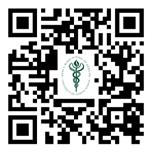
Scan here to see more Match Day photos
for the Class of 2023! of the Class of 2023 matched into the specialties of their choice.
100%
The highest number of students matched in Internal Medicine (18).
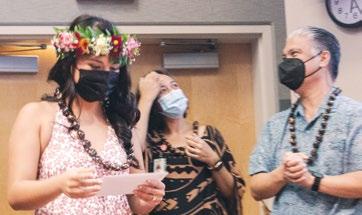
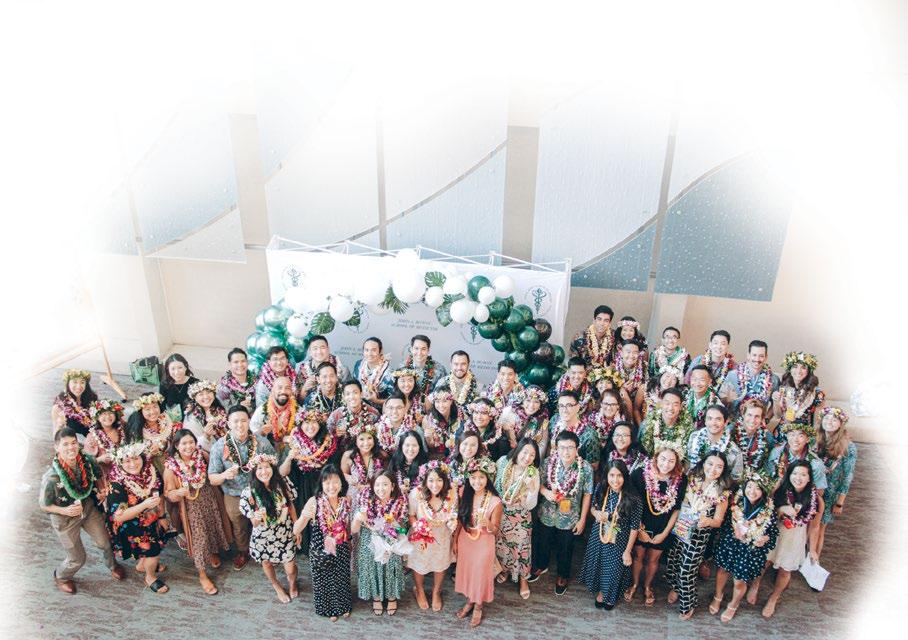
18 INTERNAL MEDICINE



6 PSYCHIATRY

5 PEDIATRICS

5 OBSTETRICSGYNECOLOGY

ORTHOPEDIC SURGERY
10 GENERAL SURGERY RADIOLOGY
5

5 FAMILY MEDICINE
3


3 OTOLARYNGOLOGY

2 EMERGENCY MEDICINE
2 MEDICINEPEDIATRICS


2 OPHTHALMOLOGY

1 DERMATOLOGY

1 NEUROLOGY
1 PATHOLOGY


1 PHYSICAL MEDICINE & REHABILITATION

1 RADIOLOGYINTERVENTIONAL

1 TRANSITIONAL

18-year-old Ryan Nguyen never dreamed he’d be a JABSOM student when he turned 15. His passion for biology and science sparked during a school science fair at Niu Valley Middle School.
“I was given the opportunity, especially in biology, to learn at an early age. For me, that was my chance to really do something that I cared about and felt was tangible,” he said.
At 11 years old, Nguyen started classes at Kapi‘olani Community College (KapCC). He then took undergraduate classes at both UH Mānoa and KapCC, initially planning to do research. Nguyen was 15 when he received his Bachelor of Science at UH. At 16, he started classes as a first-year medical student at JABSOM.
At the same time Nguyen started his medical journey, Disney decided to remake the hit show Doogie Howser, M.D. The 2021 Disney reboot was set in Hawai‘i with “Howser” replaced by “Kameāloha,” and the main character of “Doogie” was a teenage girl.
While Nguyen admits there are parts of the teenage experience he missed, he wouldn’t trade his route for anything. He hopes to eventually pay it forward as a physician by teaching aspiring students.
“I have zero regrets,” he said. “It’s been a lot of fun, but there are things that you only can do in high school. There are things you can only do when you’re not in higher education. I know I haven’t been afforded

that, but I think the trade-offs and things I’ve chosen in that regard have been more than worth it.”

Originally from Athens, Greece, Stefanos Giannakopoulos has come a long way from home to study at JABSOM. In addition to long days as a student-athlete playing Division 2 NCAA basketball at Hillsdale College in Michigan, he graduated with his BS in biochemistry with honors. His next stop was the JABSOM Department of Cell
and Molecular Biology, which happened to be his top choice due to the program’s prestige and the type of research conducted by the investigators at the UH medical school.
Making an alley-oop straight from obtaining his bachelor’s degree and straight into a PhD program, Giannakopoulos studied the effects of severe COVID-19 on testicular cells under the mentorship of Dr. Saguna Verma, professor in the JABSOM Department of Tropical Medicine, Medical Microbiology and Pharmacology.
“She has played a big role throughout my PhD training and has mentored/challenged me to develop a strong thesis project and learn different technical skills,” said Giannakopoulos. “Beyond that,
she is an incredible role model, and I aspire to be like her both inside and outside of the lab.”
Under her mentorship, Verma connected Giannakopoulos with collaborators at Wake Forest University, who provided him with valuable organoid models and local experts to help further strengthen his proposal. Their collaborative study was published in the journal Plos Pathogens in May.
Males with severe cases of COVID-19 can experience symptoms such as inflammation of the testicles, decreased levels of testosterone, and low sperm count. The outcome of his study provides significant insights into how the testicles can be injured and what happens to their function when someone has been infected with the virus. Additionally, the SARS-
CoV-2 virus proteins have been associated with disease severity. Giannakopoulos has been trying to discover the link between the disease severity and why Native Hawaiians and Pacific Islanders are disproportionately at higher risks of illness.
He believes that in the long term, their data may provide some biomarkers to monitor male reproductive health in recovered COVID-19 patients.
Giannakopoulos was recognized for his outstanding presentation at the 2022 Annual JABSOM Biomedical Health Disparities Symposium. The following year, he was honored with the Windsor and Mary Cutting Award for Most Outstanding Doctoral Student in Biomedical Sciences (Pharmacology).
“Itfeels a little surreal. We’ve been waiting for this moment for a long time, and it’s finally here. All the hard work we put in, it definitely paid off,” said Erin Kim.
For her and her twin sister, Lauren Kim, the JABSOM White Coat ceremony was something they’d been dreaming about nearly their entire lives.
“There’s nothing else we pictured ourselves doing,” Lauren said.
Both sisters successfully made it through the JABSOM ‘Imi Ho‘ōla PostBaccalaureate Program and together they’re ready to face the challenges of JABSOM’s MD program.
“It feels great to know that there’s someone with you, who’s your rock, your anchor, especially through the hard times,” Erin said. “Lauren is someone I would study with, and we would keep each other going and keep that motivation up.”
The twins’ bond has been unbreakable to this point. The sisters say it’s reassuring to know when they lean on each other over the next four years; they’ll know what the other is experiencing because they’re navigating the journey together. The goal for both sisters is to stay in Hawai‘i to practice.
“Family sparked this dream,” Lauren said. “We’ve had hardships, and through those, too, being able to overcome the losses

we’ve experienced here and there, we’re now in a position where we can help those in similar situations or who feel helpless. That’s something I want to do to give back to my community and do that for Hawai‘i.”
In

the medical school world, JABSOM student Emily Erika Acoba-Harrison is an online presence, sharing her medical journey as a first-generation Filipina-American student with thousands of followers (16.7k, to be exact) on social media.
Originally from Ewa Beach, Acoba-Harrison grew up with family members speaking Ilokano to her and immersing her in her culture. She decided to pursue medicine after seeing the illnesses that plagued her family, as well as the lack of physicians that looked like her.
“Filipinos make up 20% of our population but only 5% of our physicians are Filipino,” Acoba-Harrison said. “So I saw
myself as filling that need and the importance of not only more representation of Filipinos in healthcare and medicine, but also more culturally competent care in general, not just for Filipinos.”
She was inspired by medical students and doctors who were on a similar path as her, and that’s what led her to open up her own Instagram and TikTok accounts. You can follow her at @ee_to_ md as she shares her accomplishments and struggles in medical school and the resources that have helped her on her journey.
“I think it’s super important that I make it known that I am Filipino and that I’m also a first-generation college graduate and medical student because in my early pre-med years, they say you can’t be what you can’t see,’” AcobaHarrison said. “In general for anyone who wants to go into medicine, my advice is to not let setbacks stop you from the overall goal. It’s so important to find a mentor who understands where you’re coming from.”

Scan to watch our video
The first round of the Hawai‘i Healthcare Education Loan Repayment Program (HELP) is keeping more than 400 medical professionals in Hawai‘i. The brand new program was created to ease the shortages of physicians and other health care professionals by retaining those who already practice in Hawai‘i while recruiting those who are in medical residency training programs on the continent.
The 2023 Hawai‘i State Legislature provided an unprecedented $30 million over two years in educational loan repayment to health professionals licensed or otherwise certified to practice in and provide care to patients in Hawai‘i.
In exchange for two years of full-time service in Hawai‘i, high-demand healthcare professionals will qualify for loan repayments up to a maximum of $50,000 per year. The eligible amount varies depending on the profession, location of practice, and educational indebtedness. All must provide care to, or work for organizations that have at least 30% of their patients receiving public insurance.
The first HELP cohort includes close to 300 primary care and behavioral health providers across the state, 90 other specialties or professions practicing in rural areas, and about 40 medical residents in training.
Interim Dean of JABSOM, Dr. Lee Buenconsejo-Lum is excited that about 110 physicians, including 66 in primary care specialties, and many others in high-demand specialties are getting HELP. “The COVID-19 pandemic took its toll on many, especially those in private
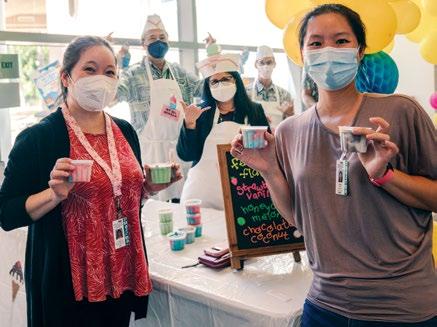

practice. Most have not fully recovered and face difficult decisions about staying in Hawai‘i. This program helps us keep local doctors and other providers here despite our very high cost of living and myriad other challenges.”
Since its inception 16 years ago, the annual fall campaign has amassed a total of more than $7.7 million. Faculty and staff actively contribute to specific areas of the school that hold personal significance, backing over 110 distinct funds within the medical school. To sweeten the deal, their contributions are augmented by tens
of thousands of dollars in matching donations, courtesy of Interim Dean Lee Buenconsejo-Lum, the IGC Co-Chairs, the executive leadership team and former JABSOM Dean Jerris Hedges. This year, the campaign reached new heights, securing $564,407 from a record-breaking 446 faculty and staff donors.

For the last decade, JABSOM’s Dr. Rosita Leong Mini-Medical School on Healthy Aging has delivered an important health message to nearly 1,000 of our kūpuna.
“One thing we really want people to do as they age is to remain as healthy as possible and to
continue to be lifelong learners,” said Dr. Kamal Masaki, the Mini-Med School director.
That’s why the Mini-Med School program is so vital to Hawai‘i, a state where one in five people are 65 and older, according to the latest data from the 2020 census.
Mini-Med School is held twice a year and covers topics like rheumatoid arthritis, breast and prostate cancers, and spine strengthening. It also dedicates sessions to answering lingering questions like what to expect when undergoing surgery and how to use exercise as medicine.
In the competition to land a coveted residency spot, research can help a student stand out from others. While completing the research may be a student’s most significant achievement, the next hurdle is presenting their findings. Many open-access journals make publications freely available to readers, but drawbacks exist. Authors sometimes pay processing charges ranging anywhere from $15003000. Another way to share research is to present at conferences but the travel expenses and conference fees can put JABSOM students at a major disadvantage.
That’s why Medical Student Research Director Dr. Russell Woo has been digging into his own wallet to help JABSOM students cover the costs associated with presenting research, and he isn’t the only faculty member to do so.
“Here in Hawai‘i, we have a unique population, and who else is going to answer the questions that are relevant to us?” said Woo. “They’re (Our students) the next generation, and I’m passionate about giving them every opportunity to train the best they can so that the next generations of Hawai‘i’s physicians will only get better and better at what they do,” adds Woo.
In addition, Dr. Linda Wong, professor and senior associate chair of JABSOM’s Department of Surgery, provided the seed funding to establish the JABSOM Student Publications Fund.
Make a gift to student publication expenses
“The philosophy of the Mini-Medical School is to be mentally active. Our students are doing that by learning here. We encourage them to be mentally, physically and socially active, and to have nutritional balance,” Masaki said. As Mini-Med School celebrates its tenth anniversary, Masaki believes the messages shared at Mini-Med School will lead to a healthier kūpuna population in Hawai‘i.
“One thing we really want people to do as they age is to remain as healthy as possible and to continue to be lifelong learners,” Masaki said.
Scan for more information on Mini-Medical School


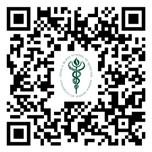
Support research and travel opportunities
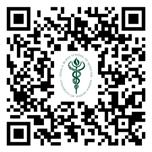
The JABSOM Lens serves as a snapshot of everything that’s happened on our campus over the last 12 months. Whether you are a JABSOM alumni, faculty, staff or supporter, you are part of our ‘ohana and the Lens keeps us connected. The Lens and other JABSOM milestones would not be possible without the support of Ilza Veith, PhD. Veith died ten years ago at the age of 101 and we’re celebrating her in the pages of the publication made possible by her contributions.
Veith was friends with some of JABSOM’s forefathers like Drs. Charles S. Judd, Jr., Kekuni Blaisdell and Yoshio Oda. Judd earned a master’s degree
in medical history in 1969-70 after studying with Veith, and all three Hawai‘i physicians had a strong interest in medical history. Veith would often visit Hawai‘i and made a bequest in the memory of former JABSOM faculty Charles Sheldon Judd, Jr., MD to start the Veith History of Medicine fund.
Following Veith’s passions, this fund is used to bring JABSOM’s history of medicine come alive through lectures and media. It keeps her memory alive as we continue to chronicle the people and accomplishments that make our medical school so special and share these stories with an audience that extends beyond the walls of our school.

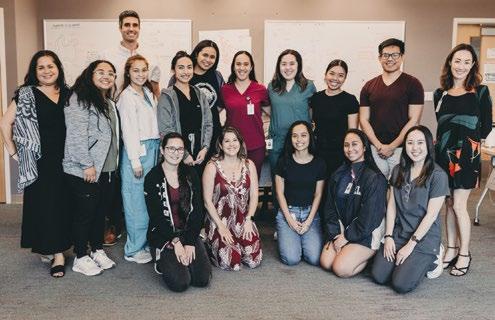
2023 marked the 50th anniversary of JABSOM’s ‘Imi Ho‘ōla PostBaccalaureate Program. As the milestone is celebrated on other pages of the JABSOM Lens, the medical school recognizes those who helped pave the way. One of those pivotal figures was Concetta DiLeo, a longtime advocate
for women in higher education.
As someone who was given the opportunity to pursue her dreams, DiLeo, a special education educator, and businesswoman, was committed to supporting the pipeline of locally trained medical professionals in Hawai‘i.
She established two scholarship funds at JABSOM to help students from disadvantaged backgrounds achieve their medical career goals: The ‘Imi Ho‘ōla Leadership Scholarship Fund and the Empowerment Scholarship Fund.
One recipient was Dr. Sasha Raymond
(JABSOM MD 2013). The friendship they formed lasted more than a decade as DiLeo was persistent in checking up on Raymond and offering her encouragement throughout medical school. DiLeo was even there to congratulate Raymond after the birth of her first two sons.
“My path to get where I am today was not the easiest. I believe in my core that I was meant to meet Concetta,” said Raymond. “I was meant to meet someone like her because empowerment is key.”
Though DiLeo passed away in 2021, through the help of her executor, new tables and chairs were recently purchased for the ‘Imi Ho‘ōla classroom in her name.
“To see all of this and the strides ‘Imi has made, (DiLeo) would be so happy–thrilled!” Raymond said.
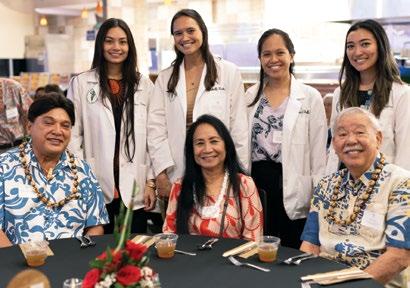
Did you know according to the Liaison Committee on Medical Education, 93% of students from the 2022 graduating class at JABSOM received a scholarship? That’s compared to 64% at all other medical schools.
This achievement is made possible by the generosity of donors, and each year, through the University of Hawai‘i (UH) Foundation, JABSOM reserves a special night where students can meet their donors face-to-face.
It was a night of inspiration and gratitude because, for many, the path to becoming a doctor would not be paved without scholarships.
Here, while she was still a medical student, Dr. Joanna Reinhardt, a single parent raising three children, met her donor, William Loui, MD.
Reinhardt was one of the first recipients of the Florence J. Chinn Memorial Scholarship, named after Dr. Loui’s mother.
Chinn was a female pioneer in medicine. She attended the Woman’s Medical College of Pennsylvania, one of only two nationwide medical schools dedicated to training female physicians. When she moved to Hawai‘i in 1959, she became one of the state’s first Chinese female boardcertified internists. Chinn accomplished all of this while raising five children on her own. Decades later, Chinn’s story still resonates today and is reflected in future doctors like Reinhardt.
For over 40 years, Dorothy Craven was a faculty member of the JABSOM Communication Sciences and Disorders Program. She retired in 2010, but even at 97 years old, Craven is still vivacious and continues to invest her time into future generations of speech-language pathologists.
That’s why, with the support of the UH Foundation, the Dorothy Craven Education and Lifelong Learning Fund was established in July 2022. The fund was developed to support the education and research efforts of CSD students and continuing professional education opportunities for SLPs to create the best evidence-based practices for their patients and, overall, the communities around them.
This fund sponsored a research symposium for the graduating cohort of 2023, which was held at the UH Cancer Center Sullivan Conference Center, all in front of the curious Craven.
“It’s amazing. I am very honored to be one of the first recipients of this scholarship. I feel like Dr. Chinn’s story was amazing, especially since she was able to make that leap generations ago. It warmed my heart to know that it was possible and that she was someone who was able to do that. It was very meaningful for me to be able to follow in her footsteps and have financial support,” Reinhardt said.
When Reinhardt met Loui, she thanked him with a lei and explained how his mother’s scholarship would pay dividends for our state in future years.
“It makes a huge difference. I don’t have nearly the debt I would have if I didn’t have these scholarships, which then allows me to not be so dependent on signing up for loan repayment programs which would require me to move to the continent,” she said. “Knowing I have the flexibility to stay in Hawai‘i and practice at a community health clinic like those you’d see in Hau‘ula, I know JABSOM graduates will benefit our community.”
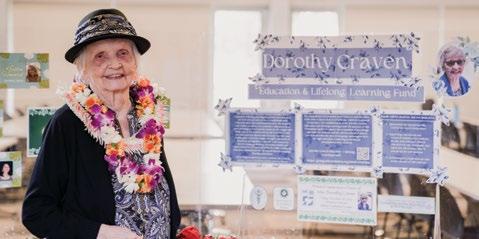
“Being a speech-language pathologist is not easy, but it’s very satisfying,” she said. “It is inspiring to see the excellence and creativity in the research completed by the graduate students in the CSD student symposium. I am honored to be a part of this academic community.”

The strides on the Garden Isle aren’t just from the Kaua‘i Medical Training Track. JABSOM and Hawai‘i Pacific Health are partnering to plan and develop a rural Family Medicine residency program on Kaua‘i. The funding comes from The US Department of Health and Human Services (HHS) via the Health Resources
For years, access to healthcare has been a hurdle for many on Kaua‘i. Expanding training in rural areas will fill the void so many have grown accustomed to.
Currently, the 233 residents and fellows in 18 specialties sponsored by the University of Hawai‘i Graduate Medical Education enterprise train almost exclusively on O‘ahu.
The proposed rural curriculum would now provide a cohort with more than 60% of the Family Medicine Residency training on Kaua‘i once the Accreditation Council on Graduate Medical Education approves the program. The program, which embeds more interdisciplinary
training opportunities with public health than many existing family medicine residencies, will strengthen and grow the health workforce, eventually making it easier for Kaua‘i families to access care.
“Family medicine physicians care for entire families, from the youngest children to the kūpuna,” said Dr. Allen Hixon, chair of JABSOM Department of Family Medicine and Community Health, and Hawai‘i Pacific Health chief of academic family medicine. “With the ongoing shortage of primary care physicians, especially in rural areas, this federal grant provides an incredible opportunity for JABSOM to partner with Hawai‘i Pacific Health, the state Department of Health, and the Kaua‘i community to train the next generation of family medicine physicians on Kaua‘i.”
Theshortage of geriatricians nationwide is staggering—demand is estimated at 30,000 with fewer than 7,000 practitioners. This leaves a crucial gap in healthcare services as the elderly population expands. In Hawai‘i, the demand for geriatricians far outpaces the supply: Hawai‘i holds the title of highest life expectancy in the nation at 80.7 years, along with the highest percentage of residents aged 85 and older, according to recent U.S. Census data.
Compelled to provide a solution, philanthropists Anne Nohara-Abaya and her husband Allen Abaya established two pilot programs to support geriatric care in Hawai‘i: The Nohara-Abaya Loan Repayment Award and the Nohara-Abaya Curriculum Support Fund.
“It was eye-opening,” said Anne, who learned more about the shortage after
attending the Dr. Rosita Leong Mini-Med School. “Hawai‘i has so many seniors—how much better would things be if we had more geriatricians?”
The Nohara-Abaya Loan Repayment Award recipients receive $50,000 towards student loan relief and/or financial support – providing an opportunity for young doctors facing financial barriers to pursue their passion for geriatric care in favor of choosing a more lucrative specialty in order to quickly pay off student debt.
Born and raised in Hawai‘i, Dr. Kathryn Kianalani Choo Loy, JABSOM geriatric medicine fellow, cannot imagine practicing anywhere else and is grateful to be one of first recipients of this award. “My hope is that I can be a support system for my patients who are going through so many transitions at their age, and need someone with patience
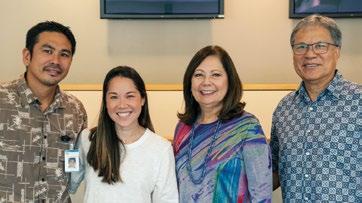
The Abayas with the inaugural award recipients, Drs. Kapono Chang and Katherine Kianalani Choo-Loy
and compassion to help them remain not just healthy– but happy as well,” said Choo Loy.
The goal of the second pilot program will expose nurse practitioners to the geriatrics specialty through interprofessional education and collaboration with JABSOM medical students. The program is administered by the JABSOM Department of Geriatric Medicine but will be available to nurse practitioner students enrolled across three institutions including UH Mānoa, Chaminade University and Hawai‘i Pacific University.
JABSOM Dean Emeritus Dr. Jerris Hedges was named recipient of the Honorable Judge James S. Burns Award by the Friends of the Medical School (FOMS). The esteemed award recognizes JABSOM faculty, alumni or community members who have made notable contributions to the medical school. The award was presented to him at the 2023 JABSOM White Coat Ceremony by FOMS President Norma Murayama and Emme Tomimbang Burns, Hawai‘i veteran broadcast journalist and wife of the Honorable Judge Burns.
“The James S. Burns award was created to honor the legacy of Judge Burns and the recipient is one who dedicates oneself to the betterment of JABSOM. The Friends of the Medical School picked the perfect individual– retired Dean Jerris Hedges. During his 15-year tenure as the dean of JABSOM, he devoted himself to advancing the medical school in so many areas and has changed the face of medicine for the state of Hawai‘i,” said FOMS President Murayama.
JABSOM saw tremendous growth during Hedges’ tenure, especially in primary care education and its connection with the community. JABSOM has grown its class sizes, offered robust scholarships and expanded its reach beyond O‘ahu while uniting the school with the rest of the state and the UH System. Hedges officially retired on March 1, 2023.

“ “


One of the most satisfying features of working at JABSOM was spending time making many things happen across Hawaiʻi with some of the most talented and creative people with whom I have served.
– Emeritus Dean Dr. Hedges

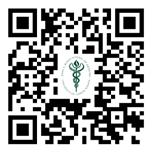
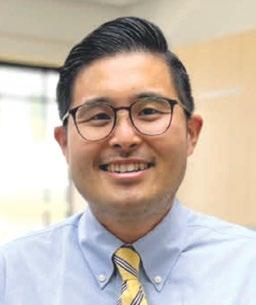 Matthew Oishi, DMD
Matthew Oishi, DMD
JABSOM is integrating oral health into its curriculum, thanks to a $2.25 million endowment from Hawaii Dental Service. Part of that establishes JABSOMs first oral health director. Dr. Matthew Oishi started in the role in 2023 and created a four-year curriculum plan for oral health that has been woven into JABSOM’s problembased learning cases, hands-on workshops and H.O.M.E. clinics.
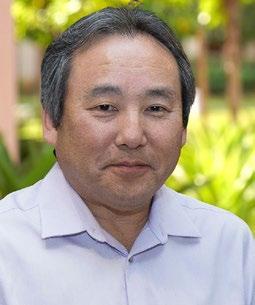
Scott Kuwada, MD
alum Scott Kuwada is the new Internal Medicine Chair. Kuwada assumes the role with an extensive internal medicine and gastroenterology background. Kuwada trained at the Mayo Clinic and worked at the University of Utah and Huntsman Cancer Institute. He’s currently at The Queen’s Medical Center, specializing in gastroenterology.

The need for wellness and resilience in the workplace is underscored more now than ever before. JABSOM recognized that and tapped Tracie Ann Tjapkes to be the school’s first director of organizational resiliency. Tjapkes will be working with and for the students, faculty and staff– making JABSOM a place where people come to work with purpose, while feeling supported and anticipating joy.

Cyrus Pattermann is JABSOM’s new facilities director. As a Marine for 21 years, Pattermann spent some of that time in Hawai‘i and when he retired as a combat engineer, he wanted to return. “I was really fortunate to get a great opportunity with the State of Hawai‘i, the Department of Transportation Harbors. I picked up a position as the construction maintenance superintendent at the Honolulu Harbor. I did that for almost three years until this opportunity here at JABSOM came up. I put my name in the hat and I was lucky to get it.”
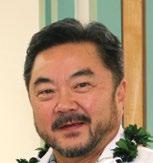
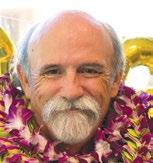
DR. KENRIC MURAYAMA
Chair, Department of Surgery, 13.5 years with JABSOM
DR. ROBERT NICHOLS Professor, Department of Cell and Molecular Biology, 15 years with JABSOM
Tracie Ann Tjapkes Cyrus PattermannWhile their journey might seem like a carefully orchestrated script, the Murayama family never intended to become a “JABSOM family,” but healthcare is in their blood, and their ties to JABSOM run deep. Kenric, the patriarch, is a 1985 JABSOM graduate and retired chair of the Department of Surgery. His wife, Norma, a former nurse, shares this commitment to healthcare and education as the president of the Friends of the Medical School. The Murayama children—Matthew, Michael, and Sarah—each found their calling in medicine after witnessing their father’s genuine passion for patient care. Michael and Sarah are both JABSOM graduates. According to Sarah, Kenric and Norma created an environment that nurtured their individual interests, allowing them to find their paths in medicine.
“When I was younger, I would say I wanted to be a pediatric oncologist, which I don’t even know how I knew what that was,” Sarah Murayama said with a laugh.
Sarah ultimately chose OB-GYN for her residency, while Michael is a pediatrician at Queen’s. Matthew is in family medicine. The Murayama journey, marked by relocations and sacrifices, symbolizes the dedication required for a surgical career. Kenric’s return to Hawai‘i from Philadelphia in 2015, becoming professor and chair of the Department of Surgery, marked a full-circle moment. In 2019, Kenric was inducted into the American College of Surgeons Academy of Master Surgeon Educators and is the only surgeon educator to represent Hawai‘i.
“Without JABSOM, I wouldn’t be where I am today. I wouldn’t have been able to build things for our family,” Kenric Murayama said. “I always feel a debt of gratitude to the school. Hopefully, I’ve made them proud. They gave me a chance to become a physician, but without JABSOM, I was ready to apply to be a chef!”
Norma’s role as president of the Friends of the Medical School provided insights that guided her children through medical school challenges. The support system within the Murayama household became an essential outlet, offering a shared understanding of the rigors of medical education. Throughout the years, the Murayama family has witnessed positive changes at JABSOM while cherishing the enduring values that have defined the institution.
“I think JABSOM does a really good job of creating a family within the medical school. They really build that community
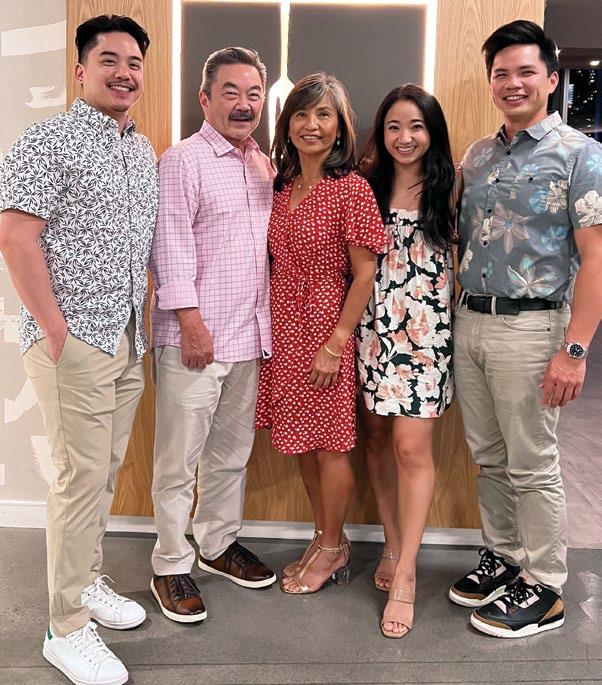
between the students and faculty preceptors in the community. I’ve loved my time here; it really prepared me for the clinical settings ahead,” said Sarah, a 2023 grad and now an intern with the UH OB-Gyn Residency Program. Kenric’s pride for his children, who have embraced the mission of providing healthcare in Hawai’i, echoes the family’s commitment to a fulfilling medical career.
“When they all gravitated back to medicine, there was this sense of pride and happiness because I know how fulfilling a career this can be,” Kenric said.
“Deep down, as a parent, you want them to do what makes them happy,” said Norma. “They could have stayed on the mainland, but coming home and being home kept our family together. There was this sense of pride and happiness that we were all together as a family.”
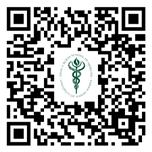
Scan to watch our video
Holding a PhD and MD, Dr. Brittany Sato is one of the few physician-scientists in Hawai‘i. According to a report published in Academic Medicine, less than 10 percent of graduates of all LCME-accredited U.S. medical schools are MD-PhD dual-degree holders. This makes Sato’s unique journey, one rooted in compassion and a commitment to uplift her Nānākuli community, even more special.
“I felt that medical school was the avenue in which I could contribute to my community and help people,” said Sato, who completed her BS in Biochemistry at the University of Evansville in Indiana and her PhD in Cell and Molecular Biology from UH Mānoa.
Having grown up on West O‘ahu, Sato witnessed health disparities in rural communities, especially among Native Hawaiians. This fueled her leap into medical school and choosing JABSOM. “What better way to help my community than by learning and training with the people here,” she said.
Completing the intense ‘Imi Ho‘ōla Post-Baccalaureate Program in 2018, she credits the year-long curriculum as a pivotal part of her time at JABSOM. She thanks her support system–her husband, parents, and ‘Imi classmates and faculty for encouraging her.
Sato’s highlights throughout medical school included assisting with a birth during her labor and delivery rotation, helping to diagnose a teenager with a rare congenital malformation during her third-year rotation, and participating in Kua‘ola for her community health elective that allowed her to return to her hometown to give health education talks to middle school students.
However, Sato’s medical school highlights weren’t without a few bumps in the road. Imposter syndrome, a brief academic detour, and the juggle of motherhood and her studies peppered the path. But with the help of her support system, she navigated and overcame those obstacles.
Reflecting on her journey. Sato’s advice rings true: patient care trumps timelines, and it’s okay to hit pause for self and family. The unwavering support from JABSOM remains a constant, reminding her that the journey is as vital as the destination.
Sato found her calling in gynecological pathology and joined the UH Pathology Residency Program last summer. Inspired by her high school alma mater’s founder, Princess Bernice Pauahi
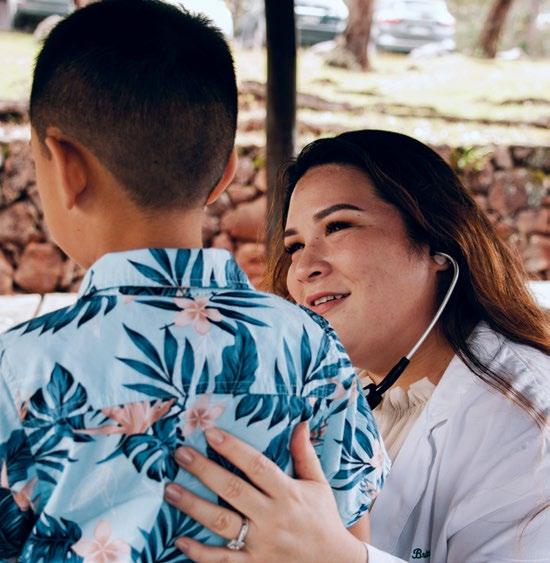
and non-traditional students.
“[Her words] hold a special place because honestly, without having attended Kamehameha for high school, I never would have taken the path I did, being one of the few Native Hawaiians to obtain a medical degree and a PhD. I can only hope that I am living up to what she hoped some of her people could achieve through her gift of education,” Sato said.
She adds, “I also hope to be a role model for up-and-coming women. That we, women, can successfully have both: careers in medicine and families. Not that it is easy, but it is possible, and it is worth the hard work.”
“ “
Don’t be afraid to be a non-traditional student, but be sure that your goal is always towards medicine, whether it be volunteering or working. Stay focused on your goals and work hard for it.– Dr. Brittany Sato
Spring
2023 marked fun times for alumni and JABSOM ‘ohana as the school’s alumni association hosted two inaugural events: A golf tournament and an Easter Eggstravaganza.
Golfers teed off at the Ewa Beach Country Club in March to raise funds for the school’s alumni association scholarships and the MD Class of 2026,
who volunteered at the event. Familiar faces included alumni, faculty, residents, their families, local businesses and even some medical students who took the opportunity to get to know their preceptors better through friendly competition.

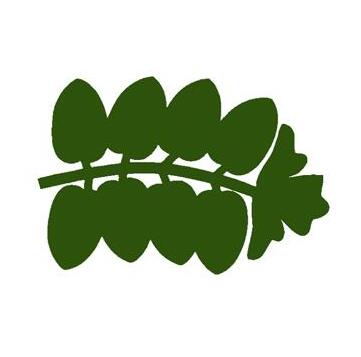
Richard Kasuya
President
JABSOM MD 1989
Ryon Nakasone
Vice President
JABSOM MD 2006
Christie Izutsu
Treasurer
JABSOM MD 2011
Gina Fujikami
Secretary
JABSOM MD 2008
Kheng See Ang Emeritus Director
JABSOM MD 1982
In April, laughter roared across JABSOM as keiki swarmed a treasure trove of brightly colored eggs hidden throughout the grand lawn. Those who attended the Easter celebration event were also treated to a petting zoo, cookie decorating, snacks and a special visit by the Easter Bunny.
Dr. Gina Fujikami (JABSOM MD 2008), a geriatrician and alumni board association

secretary, said that the idea was to have a family-friendly event for the alumni and the overall JABSOM ‘Ohana while inviting people back onto the medical school’s campus.
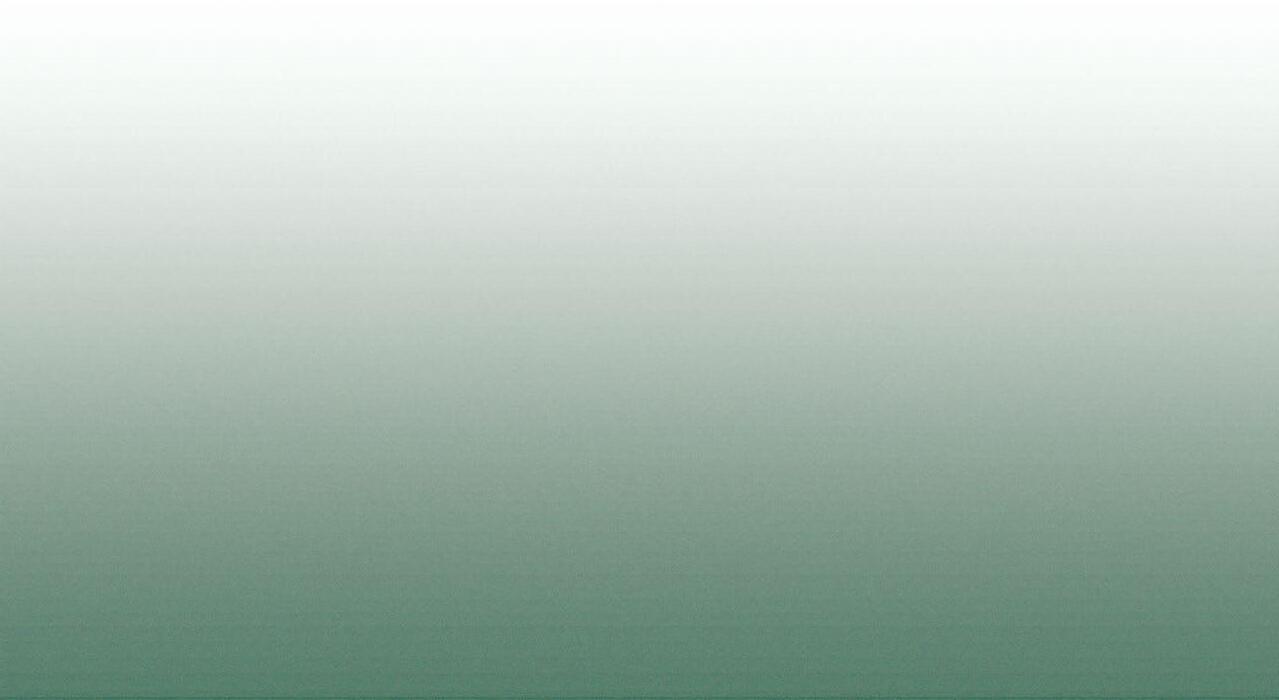
Patricia Blanchette Emeritus Director JABSOM MD 1979
Elizabeth Char Emeritus Director
JABSOM MD 1991
William Haning Emeritus Director
JABSOM MD 1975
Janice Matsunaga Emeritus Director
JABSOM MD 1980
Ivy Nip-Asano Emeritus Director
JABSOM MD 1994
Sada Okumura Emeritus Director JABSOM MD 1975
Kenn Saruwatari Emeritus Director
JABSOM MD 1981
Geri Young Emeritus Director
JABSOM MD 1978
Emilio Ganitano Director
JABSOM MD 1999
David Horio Director
JABSOM 1969
Leimomi Kanagusuku
Director JABSOM MD 2018
Todd Kuwaye Director
JABSOM MD 1997
Jordan Lee Director JABSOM MD 2010
Kenneth Ortiz Director JABSOM MD 2014
Stefanie Park Director
JABSOM MD 2004
Cindy Pau Director JABSOM MD 2008
Jayson Takata Director JABSOM MD 1991
Mike Tom Director JABSOM MD 2013
Michael Yim Director JABSOM MD 1981
Virginia Weinman, a longstanding champion of medicine and research, will be remembered for the decades of generosity she showed both JABSOM and the UH Cancer Center.
Throughout the years, Virginia and her husband, Barry Weinman, paved the way for medical student education while simultaneously giving JABSOM leadership the financial freedom to carry out their visions for the medical school.
In 2007, the Weinmans provided ten students with full medical school scholarships. The following year, they established the Weinman Chair, a resource that previous JABSOM Dean Jerris Hedges and current Interim Dean Lee Buenconsejo-Lum can tap into for initiatives that align with their objectives.
Virginia and Barry’s philanthropy also inspired and motivated our local health partners. When they offered to match the donations provided by Hawai‘i Pacific Health and the Queen’s Health System in 2018, the selfless gesture compelled our healthcare partners to contribute in unprecedented ways. The three partners made a multimillion-dollar gift, resulting in 23 fullride scholarships.
In addition, in 2020, Barry and Virginia Weinman funded a separate cohort of 10 students, now known as the “Weinman Scholars,” who will graduate in 2025.
Because of the significant seed funding provided for JABSOM’s Learning Communities, Barry and Virginia’s contributions are felt by every JABSOM medical student today. The Learning Communities launched in 2020 when
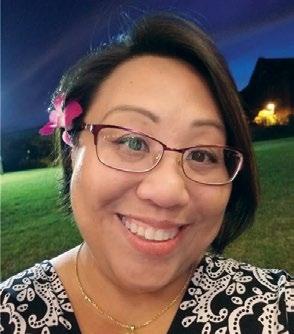
For 6 years, Helen (Longao) Helmlinger was JABSOM’s director of scholarships and financial aid counseling. After departing JABSOM in August 2022, Helmlinger moved to Nebraska with her husband Aaron. She passed away peacefully on November 28, 2023.

many physicians felt burned out from tireless shifts during the pandemic. This innovative curriculum places importance on emotional intelligence and empathy in health care. It brings students together in small groups to augment their MD curriculum and provides wellness support while preparing them for the realities of a medical career.
For many years, Virginia Weinman participated in JABSOM’s Mini-Medical School. She was honored with a moment of silence at the start of the Fall 2023 session.


Dr. Guillory taught at JABSOM for more than three decades. In 2004, he was named professor emeritus of the JABSOM Department of Anatomy, Biochemistry, and Physiology.

University of Hawai‘i Foundation
John A. Burns School of Medicine
651 Ilalo Street
Medical Education Building, 223J
Honolulu, HI 96813
RETURN SERVICE REQUESTED

ALUMNI SEND US AN UPDATE! WE’D LOVE TO HEAR FROM YOU.
Share your latest news and accomplishments and/or update your contact information. Contact Christie Leidholm at jabsomaa@hawaii.edu to stay connected.
